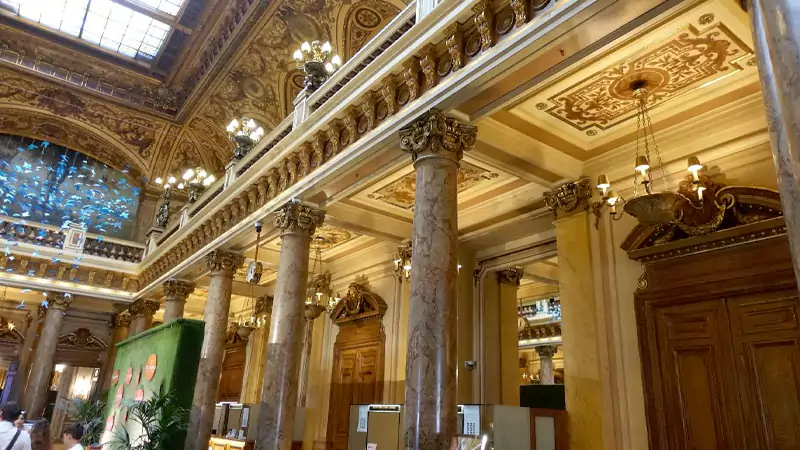
Fusion of travel and casinos escapades create a sense of luxury and opulence. They are lavish, well-decorated, and a place where the high-rollers gather to stake big sums. To some, casinos might also be a gateway to wealth that they can’t have any other way.
Whatever casinos feel like to you—One thing that’s common across the board is the respect for the intricacies and the fine details of a casino’s ambiance or atmosphere. What contributes heavily to this atmosphere is the architecture itself surrounding you.
In this article, we’re going to take a deep dive into the world of casino architecture: How are casinos planned and designed? Why do they go with certain design decisions? Do some architectural considerations actually affect the players or make the casino more profitable?
Let’s find out!
The Origins & Evolution of Casino Architecture
The rich history of leisure and entertainment entwined in the ancient times—When casinos and gambling parlors picked up in popularity. Man has always been attracted to chance-based games, mainly table games.
These table games have been quite important in the history of casinos and their architecture. For example, since the beginning, casinos needed to be planned and designed in a way to accommodate multiple tables and players so that the game can unfold naturally without any distractions.
From the earlier wonders to today’s modern marvels—Casino buildings and interiors offer plenty of space to give a sense of luxury and a lot of space for everyone to play their hand on these table games, such as baccarat, roulette, and blackjack.
Whether it’s a card-based game or not, regardless of what role the chances play, and notwithstanding how many players can play it with or without a dealer, table-based games have been the cornerstone of all casino architecture deliberations.
Early establishments are well-known to feature ornate architectural elements that could do both—Attract patrons and provide plenty of space for all sorts of table games.
Over time, this kind of a distinct style of casino architecture emerged naturally with different establishments trying to one-up their competitors. This style was fine-tuned over time to create spaces that were friendly for table games of all types and sizes while creating an aura of luxury and opulence.
Today, it’s almost too easy to get started gambling. You don’t even need to visit a land-based casino. In fact, modern-day table games online have become the contemporary equivalent of these traditional table games that once decided the course of casino architecture itself.
Nevertheless, table games, both online and offline, continue to fuel the casino industry remarkably. These form the key to everything else, with every other service inevitably tethered to them.
Given that, there’s been a lot of influence of location and culture on the best casino architecture in the world. However, all variants and offshoots have always respected the central idea of making it easy for people to play their favorite table games effortlessly, in a hassle-free way.
Even though casinos from around the world often reflect certain unique characteristics of their regions, like Las Vegas casinos being signified by neon lights and glamor and the European casinos known for their opulent designs and Asian inspiration—The theme to keep the table games at the heart of it all remains there, always.
From the Art Deco-inspired designs of the early 20th century to the modern, minimalist aesthetics of today, each style has left its mark on the world of casino architecture.
Post-COVID casino tourism is officially back, and you can look at all these marvels yourself now!
The Psychology of Casino Layout
Designing the perfect casino layout is an ingenious task requiring a lot of creativity. You see, casinos are, at the end of the day, businesses. And they need to make money to preserve their bottom line and attract more patrons by offering new deals.
As such, they have to bring in more patrons and more importantly, retain the ones they have to keep them playing for as long as possible.
With that in mind, casinos started to embrace various architectural concepts when designing their interiors—Including maze-like layouts, free-flowing spaces, and even strategically placed amenities.
All this helps create an environment where the patrons are enticed and even incentivized to explore and play, helping them immerse themselves in the casino. Ultimately, this leads to more people coming back than before.
Lighting, Décor, Soundscapes, and Acoustics
Though there are many iconic buildings, the lighting, décor, soundscape, and acoustic considerations remain pretty consistent all over the world.
Whereas good lighting sets the right mood, a carefully curated soundscape, and acoustics contribute to the auditory backdrop. On the other hand, when done right, décor can enhance the thematic experience—Increasing patron retention.
Lighting choices and backdrop sounds affect the mood in a significant way and casinos use this information as a hack to pull you toward them.
Wrapping Up
From old marvels loaded with intricate designs and opulence, following Feng Shui principles to create a balanced environment to today’s neon-bathed, minimalist casinos sprawling over acres—Casino architecture is a fascinating subject and one that requires a deep comprehension of the minute details to fully appreciate.












